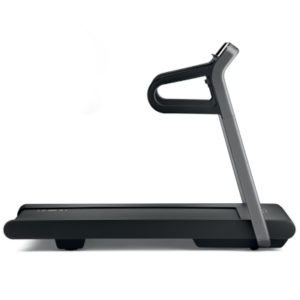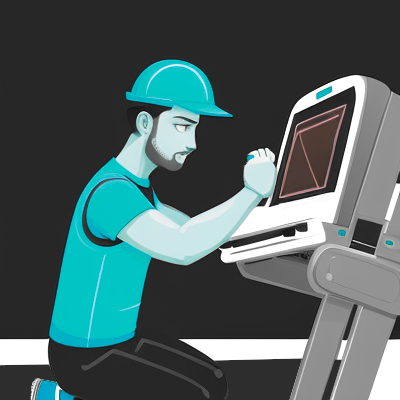 Treadmills are maybe the most popular cardio machines for keeping our heart rates up and our bodies in shape, which is why you’ll find them in many homes and gyms. However, like any other piece of equipment, treadmills require proper maintenance to keep running smoothly and efficiently.
Treadmills are maybe the most popular cardio machines for keeping our heart rates up and our bodies in shape, which is why you’ll find them in many homes and gyms. However, like any other piece of equipment, treadmills require proper maintenance to keep running smoothly and efficiently.
Although many models require very little attention, neglecting periodic maintenance completely can result in decreased performance, shortening the life of the machine, and even pose a safety hazard for you.
In this article, we’re going to talk about why it’s important to take care of our treadmills and give you some tips on how to keep them in a good condition.
Why is Treadmill Maintenance Important?
Proper and timely treadmill maintenance is important for several good reasons. Firstly, it helps to extend the life of the machine. It will prevent wear and tear, so you won’t have to spend extra on costly repairs or replace the whole machine after a few years.
Secondly, proper maintenance makes sure it’s safe to use. Even some basic regular checks can identify potential hazards. You can detect loose parts, misaligned belts, or frayed electrical wiring before they become dangerous for you and your family.
Thirdly, maintaining your treadmill will improve its performance and energy efficiency. Regular lubrication, adjustments, cleaning, and calibration can keep the machine running smoothly and efficiently.

Best Tips for Treadmill Maintenance
Here are some tips to help you maintain your treadmill:
- Clean: A important thing to keep your treadmill in good condition is giving it a regular cleaning. Periodically clean the belt, deck, and rollers with a damp cloth. Additionally, using a treadmill mat can be incredibly beneficial as it helps to minimize dust accumulation underneath the machine.
- Lubricate the Belt: Lubricating the belt is important for many treadmills to keep them running smoothly and reduce wear and tear. Every manufacturer has different requirements for belt lubrication and so check the manual for the frequency and the lubricant to use.
- Listen: Listening to a treadmill’s sounds can be a helpful diagnostic tool. If you hear strange noises like squeaks or rattles, if the belt or motor makes more noise than usual, it is possible that there is some problem with your treadmill. Try to identify the source of the unusual noise and further inspect that part in detail.
- Check the Belt: This is an easy one. The belt is the most important component of the treadmill with the motor. Check it regularly for signs of wear, damage, tension, and alignment problems. If the belt needs calibration check the manufacturer’s instructions for the recommended calibration process. (For an example check our Bowflex T10 Belt Tension and Alignment guide)
- Check Wiring and Connectors: Check the wiring regularly for signs of wear or damage. If you find any issues such as exposed cables, loose connectors (broken crimps), or fried cables have a professional look for any potential hazards. Also, in places where power cuts happen a lot, or where storms and lightning are common, unplugging your treadmill can protect it from electrical damage caused by sudden power surges.
- Storing the Machine Properly: Let’s be honest, there are times we don’t step on the treadmill for months and the machine just collects dust. In this period it is important to store it properly in a dry, dust-free area, away from direct sunlight and moisture. There are treadmill covers specifically designed to store them in a good condition.
In conclusion, for the longevity of the machine, efficiency, and safety proper maintenance of your treadmill is essential. With some regular checks and periodic maintenance, you can keep your treadmill in good shape for many years.
